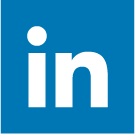Maasstad Hospital’s mission is to improve the quality of life for its patients. Every day, employees dedicate themselves wholeheartedly to providing reliable, patient-centered care that is continuously evolving. For example, by bringing care closer to patients’ homes, supporting healthcare through digital applications (e-health), and helping to prevent more expensive treatments.
To continue delivering top-quality care efficiently in the future, Maasstad Hospital has developed a digitalization strategy that revolves entirely around the patient, providing care in the right place and at the right time. This requires integration with healthcare applications such as DigiZorg and ZorgBijJou, improving information access for healthcare professionals, and enabling the future use of AI and real-time data.
Itility supports Maasstad Hospital in executing this digitalization strategy by designing and implementing an effective data landscape. We work from the perspective of both the patient and the healthcare professional, while considering the objectives of the Dutch Integrated Care Agreement. Only by understanding what end users truly need, and how they can be genuinely supported, can a strong and sustainable data landscape be realized.
Digital progress begins with mastering your data
Maasstad Hospital faces the challenge of securely and sustainably unlocking data from an increasing number of source systems, including the EPD, GLIMS, and ERP. The current data platform is both technically and functionally outdated: hardware, software, and applied technologies no longer meet the growing need for up-to-date, reliable, and easily accessible data.
More departments require management information, reports, and dashboards to support operational, tactical, and strategic decision-making.
The first step in executing the data roadmap is to unlock and transform data within the hospital environment into usable and manageable datasets. This allows Maasstad Hospital to take ownership of its data, with secure connections to (external) applications and a solid foundation for data-driven healthcare in the future.
To gradually improve data quality, a Medallion architecture is being set up, as shown in the diagram. By applying automated data pipelines, the reliability of data is systematically enhanced, inconsistencies are eliminated, and accessibility for end users increases.
The result is an open data architecture in which data from systems such as EPD, ERP, and HR is unlocked and transformed into usable layers — bronze, silver, and gold. Data exchange takes place based on OpenEHR and FHIR standards, enabling reliable real-time integration with various applications and BI tools.
What does this mean in practice for Maasstad Hospital?
With the use of structured data, care pathways can be further digitized. Patients can, for example, view their appointments, receive automatic notifications about medication changes, and follow their treatment plans. Remote monitoring also becomes possible.
Step by step, Maasstad Hospital is moving toward the healthcare of the future — data-driven, secure, and centered around the patient.





